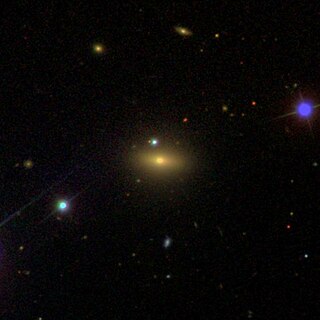
NGC 5886 is an +14 magnitude elliptical galaxy in the constellation Boötes. It was originally discovered by John Herschel on 13 May 1828 with an 18.7 inches (470 mm) reflector.

NGC 12 is an intermediate spiral galaxy in the Pisces constellation. It was discovered by William Herschel on December 6, 1790.

NGC 4634 is an edge-on barred spiral galaxy located about 70 million light-years away in the constellation of Coma Berenices. NGC 4634 was discovered by astronomer William Herschel on January 14, 1787. It is interacting with the spiral galaxy NGC 4633. Both galaxies are members of the Virgo Cluster.

NGC 75 is a lenticular galaxy estimated to be about 260 million light-years away in the constellation of Pisces. It was discovered by Lewis A. Swift from the USA in 1886 and its magnitude is 13.2.

NGC 81 is a lenticular galaxy estimated to be about 270 million light-years away in the constellation of Andromeda.
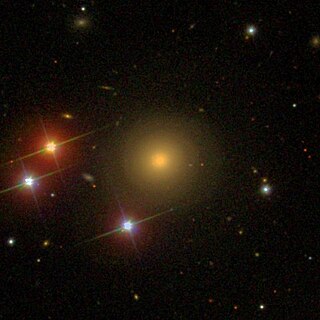
NGC 83 is an elliptical galaxy estimated to be about 260 million light-years away in the constellation of Andromeda. It was discovered by John Herschel in 1828 and its apparent magnitude is 14.2.
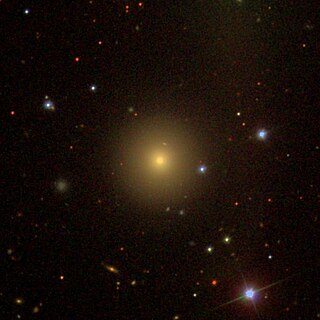
NGC 97 is an elliptical galaxy estimated to be about 230 million light-years away in the constellation of Andromeda. It was discovered by John Herschel in 1828 and its apparent magnitude is 13.5.

NGC 109 is a spiral galaxy estimated to be about 240 million light-years away in the constellation of Andromeda. It was discovered by Heinrich d'Arrest in 1861 and its magnitude is 13.7.
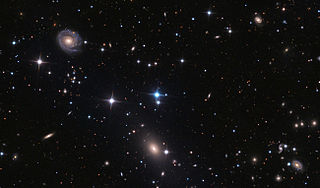
NGC 6085 is a spiral galaxy in the constellation of Corona Borealis. It is classified as a LINER galaxy and is a member of Abell 2162.
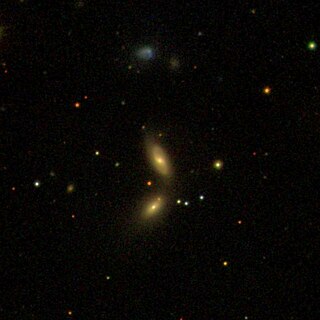
NGC 94 is a lenticular galaxy in the constellation Andromeda. It was discovered by Guillaume Bigourdan in 1884. This object is extremely faint and small. A little above the galaxy is NGC 96. NGC 94 is about 260 million light-years away and 50,000 light-years across.

NGC 116 is a possibly lost or "non-existent" object in the constellation Cetus. This object is up for debate and has been considered to possibly be PGC 1671. The NED entry for this object contains the note NGC identification is very uncertain.
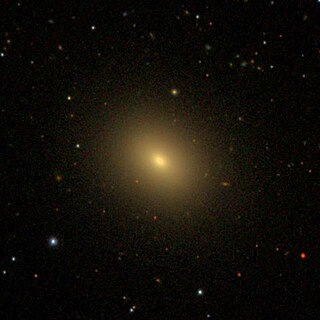
NGC 5343 is an elliptical galaxy in the constellation of Virgo. It was discovered on 5 May 1785 by William Herschel.

NGC 5575 is a lenticular galaxy in the constellation Virgo. The object was discovered on May 8, 1864 by the German astronomer Albert Marth.

NGC 5030 is a barred spiral galaxy in the constellation Virgo. The object was discovered on 17 March 1881 by the American astronomer Edward Singleton Holden.

NGC 1683 is a spiral galaxy in the constellation Orion. The object was discovered in 1850 by the Irish astronomer William Parsons.

NGC 6975, also known as NGC 6976, is a spiral galaxy in the constellation Aquarius. The object was discovered on 12 July 1864 by the German astronomer Albert Marth.

NGC 3402, also known as NGC 3411, is an elliptical galaxy in the constellation Hydra. The object was discovered on March 25, 1786 by German-British astronomer William Herschel. NGC 3402 is the largest galaxy in the eponymous NGC 3402 cluster.

NGC 920 is a barred spiral galaxy in the Andromeda constellation. The celestial object was discovered on September 11, 1885 by the American astronomer Lewis A. Swift.

NGC 890 is a lenticular galaxy in the constellation Triangulum. It is estimated to be 180 million light-years from the Milky Way and has a diameter of approximately 130,000 ly. NGC 890 was discovered on September 13, 1784 by Wilhelm Herschel.

NGC 5384 is a lenticular galaxy in the constellation Virgo. It was discovered on May 8, 1864, by the astronomer Albert Marth. It is located about 250 million light-years away.




















